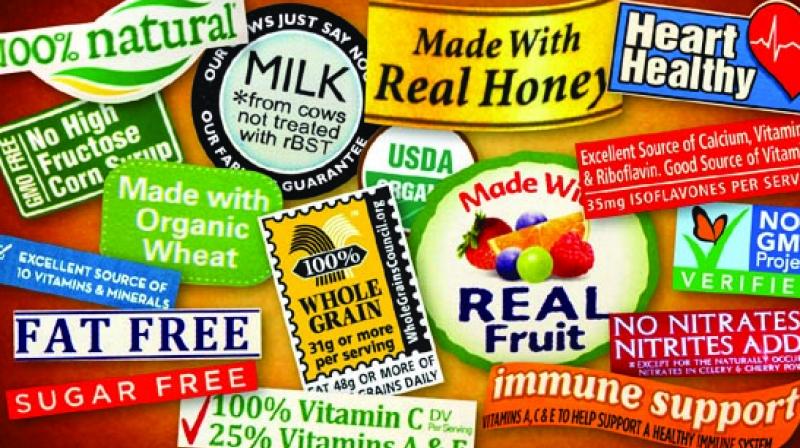In India, it's time for mandatory front-of-package food labels
According to the Global Burden of Diseases Report 2017, cardio vascular disease kills 1.7 million Indians every year.

The science is absolutely clear on the fact that excessive consumption of food and beverages high in trans-fat, sodium, sugar and saturated fat is a leading cause of heart disease, stroke and premature death in India and around the world.
More Indians are losing their lives to cardiovascular diseases than ever. According to the Global Burden of Diseases Report 2017, cardio vascular disease kills 1.7 million Indians every year. And yet, eating habits are getting worse day by day, as we consume an increasing amount of processed and packaged foods. Not only have many of these products become less healthy over time, the sheer number of choices in stores have made it difficult and confusing us from selecting healthy food. Adding to the confusion, unhealthy products may feature misleading health and nutrition claims on their packages.
Food Safety and Standards Authority of India (FSSAI) has brought down the permissible level of trans-fats on oils from 10 per cent to 5 per cent in 2015 and further committed to decreasing the same to 2 per cent by 2022. Even the current permitted trans-fat level of 5 per cent is considered very high despite being reduced from 10 per cent in 2015. Trans-fats are leading cause of cardio vascular diseases (CVD), Alzheimer’s disease, obesity, infertility, cancers, diabetes, etc. The premature mortality (years of life lost because of CVD) in India increased to 37 million in 2010 from 23.2 million in 1990 (by 59 per cent).
Consumers have a right to know what’s in the food we eat and drink, so that we can make healthy choices.
India has an opportunity now to provide such help and in doing so join a growing list of countries that are taking decisive steps to enhance the understanding and use of nutrition information and warning labels on foods containing high amounts of trans-fat and saturated fat, which are commonly used in baked goods, fried foods and fatty snacks.
Globally there is a clear consensus against trans-fats and saturated fats in our diet; just last month, the World Health Organisation (WHO) unveiled tools for countries to eliminate industrially produced trans-fat from the global food supplies by 2023, as the industrially produced edible oil leads to over 10 million premature deaths every year.
FSSAI is in the process of updating rules governing the labelling of packaged foods. The regulator’s current proposal significantly improves what currently exists. For instance, it requires foods high in sodium, sugar and fat to carry front-of-package warning labels.
Research clearly shows that consumers prefer simple labels that are immediately visible and require little time to evaluate. Front-of-package warning labels fit that criterion. They provide consumers with clear guidance to make quick and impactful decisions about the food they eat.
Front-of-package label (FoPL) designs, which are clear and impactful, play an important role in increasing awareness and shifting food-eating norms. At present, manufacturers are using varying formats of complicated nutrition labels that are not consumer friendly.
Mandatory front-of-package warning labels are considered by governments around the globe as an effective and evidence-based way to improve diets. At least 16 FoPL systems are operating in 23 countries, with another 14 schemes proposed. Chile, Israel, Peru and Uruguay have successfully adopted mandatory front-of-package warning labels, which are clear and impactful in shifting food eating norms.
Chile’s approach to warning labels that is currently considered the gold standard among health and nutrition experts. Chile uses octagonal black labels, printed with the words “alto en” (high in), along with key nutritional factors for packaged foods. Preliminary evidence in Chile suggests that the labels have helped to increase consumer knowledge about healthy food choices and led to a significant decline in sugary beverage purchases.
CUTS International, leading consumer advocacy group in India, along with a group of distinguished international health experts and other premier health organisations of India are urging the FSSAI to introduce mandatory front-of-package warning labels on foods and beverages to curb the growing epidemic of heart disease and cardiovascular deaths.
While the move to bring in a regulation on labelling and display is very much appreciated, there are many issues and concerns related to the Draft Food Safety and Standards (Labelling & Display) Regulations 2018, which can be further improved. If done properly, this regulation could have a major, long-term impact both in encouraging industry reformulation and in changing food norms. However, as they currently stand, the draft regulation has major weaknesses and a few strengths.
The strengths are related to the provisions of nutrition facts panel with ingredients, but there is felt need that if possible, saturated fat should be added to the labels, as well as trans-fats, so that all the critical components of fat that impact consumer health most severely are displayed. Second, the cut-offs for sodium and total fat which are very good but it would be ideal if the proposal had created saturated fat instead of total fat cut-offs, but these are well-thought out and fit what other countries have done.
As far as weaknesses are concerned which need to be improved, these are related to serving sizes, guidelines for daily allowance (GDAs), replacing the total fats with saturated fats or do both on the nutrition facts panel, need for rigorous testing of front-of-package design, the colours selected, and the content and approach towards front-of-package warning label.
Done right, Indian food and beverage labels can have a similar effect. And yet, some food producers and manufacturers continue to push for confusing, voluntary labelling schemes that dozens of studies show do not improve our diets.
FSSAI should not take the bait, and instead make India a global leader in strong labelling rules that provide consumers with the information to make healthy food choices.
The writer is director, CUTS International, and a member of Central Advisory Committee of FSSAI
